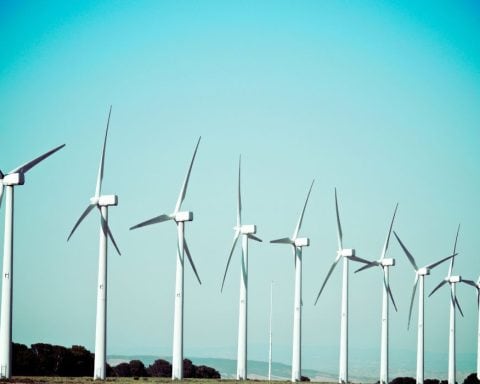As solar-energy capacity levels gallop ahead, with China leading the charge, scientists are celebrating increased efficiency in solar power cells that could eventually bring down the price of what is already the cheapest electricity in history.
The latest technological milestone has been a decade in the making. But now, several teams of researchers around the world have succeeded in pushing the efficiency of perovskite and silicon “tandem” solar cells past an important 30% threshold – which means they converted more than 30% of the sun’s energy into electricity. The higher the conversion rate, the cheaper the cost of the electricity.
“Overcoming this threshold provides confidence that high-performance, low-cost PVs can be brought to the market,” write Stefaan De Wolf and Erkan Aydin, of Saudi Arabia’s King Abdullah University of Science and Technology, in Science magazine.
Silicon photovoltaics currently dominate the market and are approaching their theoretical efficiency limit of around 29%. Scientists have found that they can improve the harvesting of solar energy by stacking two or more solar cells, in this case perovskite, a semiconductor, on top of silicon. The high efficiency rates have been achieved on small research-sized cells that are one centimetre square. To scale it, the technology will have to be applicable to larger, commercial-sized cells, which are 15 by 15 centimetres.
The record for that was set in May, by Oxford PV, which announced that it had hit 28.6% efficiency for a commercial-sized perovskite and silicon cell, compared to the 22 to 24% efficiency of a silicon-only cell.
Industry watchers urge caution with the news, noting that when the high-efficiency tandem combination can be commercialized is still unclear.
“The promise perovskite technology has is the high efficiencies it’s capable of reaching. The problem it has is stability,” says Paula Mints, chief market research analyst with California-based SPV Market Research who has specialized in solar energy since 1997. She also voiced concern about the use of lead in the products, and the risk of leaching into the environment. The issue is that perovskite materials are vulnerable to a whole host of environmental factors, like moisture, so the cells degrade. One report in 2022 pegged the longest lifespan of perovskite solar cells at one year, versus silicon cells, which last up to 25 years. “It’s great that they can reach these ranges of efficiencies,” Mints says, “but you have to last 20 years in the sun, 20 years moving up to 30.”
As scientists forge ahead with that goal in mind, capacity-building of what already is tried and tested continues to ramp up.
A recent report by Global Energy Monitor found that China is seeing a “jaw dropping surge” in solar and wind capacity, on track to hit its targets five years ahead of schedule. Although coal is still its main source of power, China already accounts for 228 gigawatts of solar power – more than the rest of the world combined. Its prospective large- scale projects amount to almost half of what is on tap in other countries, the report notes.
But despite the fervor to keep building, the world is vastly underusing its solar capacity – Mints says utilization is at about 60%.
Part of the reason is that many countries are saddled with archaic electrical infrastructure systems that are simply not equipped to deal with the “onslaught of distributed, renewable sources coming online,” she says. “There are long waits all over the world. It’s like one big transmission and distribution bottleneck, globally.”
And yet, while solar currently accounts for only 4 to 5% of global electricity generation its installed power capacity is projected to surpass coal by 2027, making it the largest in the world, according to the International Energy Agency (IEA). In 2022 it surpassed wind as the largest absolute generation growth of all renewable technologies.
It will need to do even more to help the world meet the net-zero emissions targets by 2050 that aim to avert the worst impacts of climate change.
“Continuous growth in the economic attractiveness of PV, massive development in the supply chain and increasing policy support, especially in China, the United States, the European Union and India, are expected to further accelerate capacity growth in the coming years,” the IEA says.





